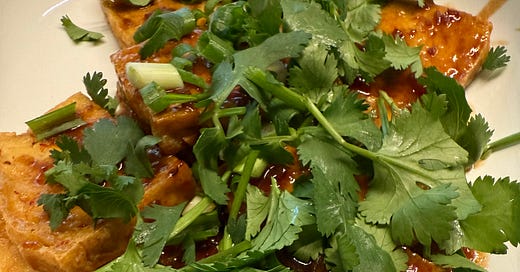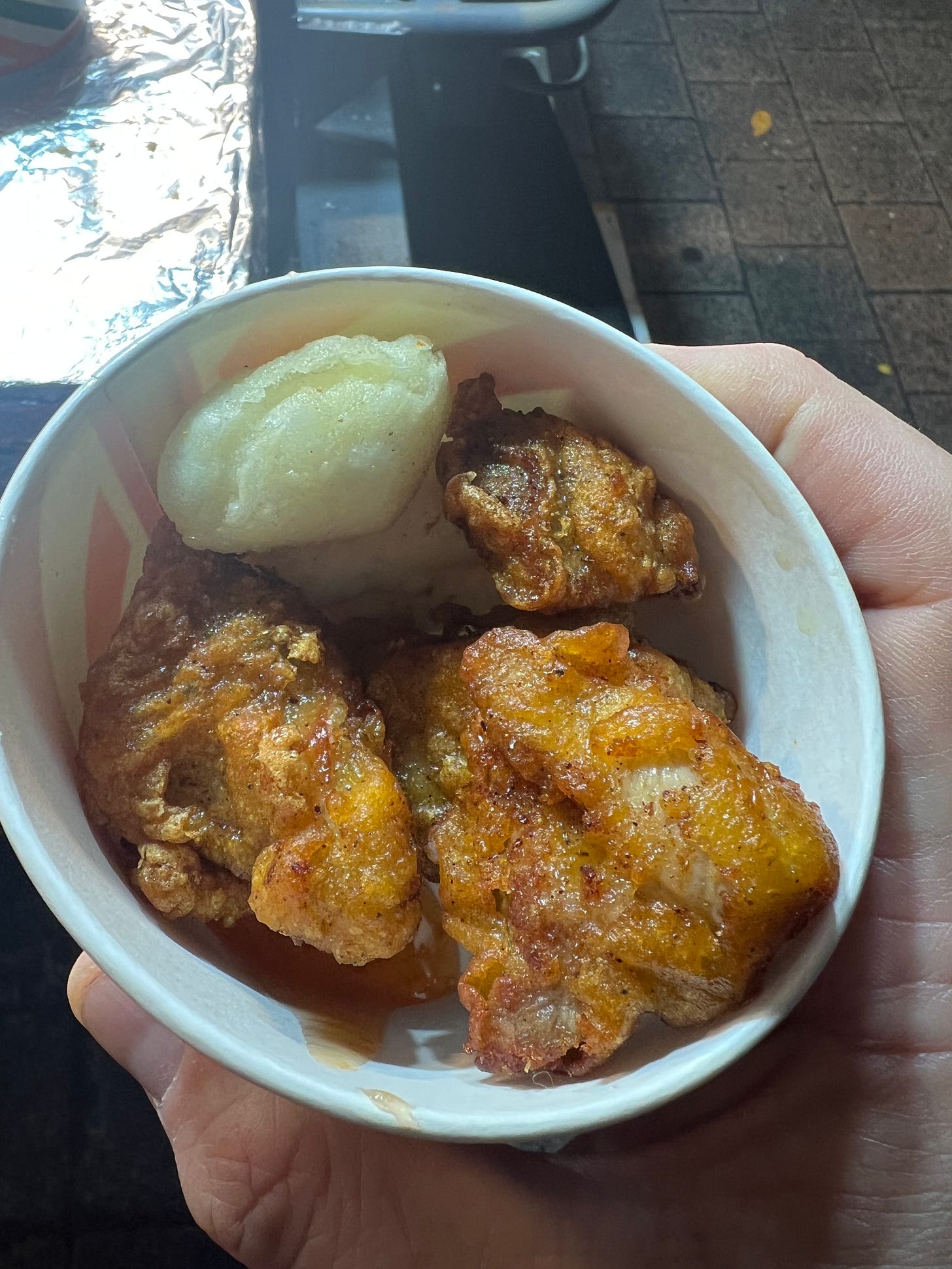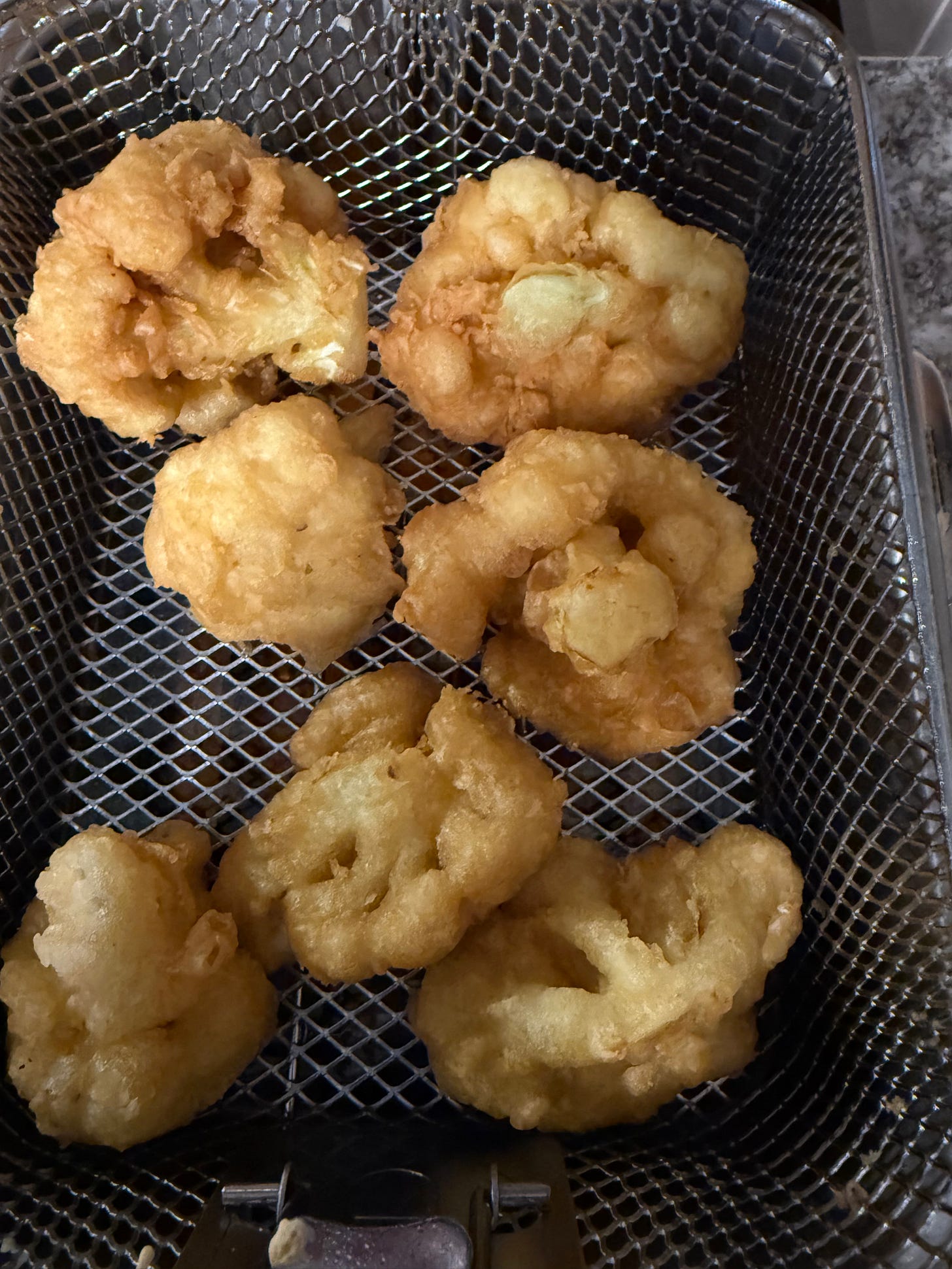Issue #207: Korean Fried Tofu
It’s the Glaze, Not the Chicken, that Intrigues, and It’s Great on Tofu
A couple of years ago, while part of a small delegation of international chefs and food people attending a conference in Seoul on hansik, or Korean cuisine, I was desperate to try a really stellar Korean fried chicken. Between inspiring Michelin-starred meals and master classes on barbecued beef, kimchi, and traditionally fermented jangs, we didn’t have a free mealtime to ourselves.
That didn’t stop me from conducting my own hansik research. During whatever personal time we had I wandered market streets and department-store food halls, trying everything from fresh ttoek (rice cakes) to mandoo (dumplings) to gim (seaweed). Early in the visit I became obsessed with salt bread, a popular, trendy, buttery roll topped with salt that was available at every bakery in the neighborhood of our hotel. I tried them all. Still, an exemplary fried chicken, any fried chicken, was elusive.

I asked my hosts and friends, restaurateur Ellia Park of NYC’s Atomix and chef JY Choi, who had just founded a Korean culinary cultural nonprofit called Nanro in Seoul, where I could find a respectable fried chicken. They looked at each other, then looked at me. I wasn’t sure if they thought I was kidding, whether they were wondering how I could still be hungry, or if they were trying to decide where to send me. What they said was that these days you didn’t really go to a restaurant to eat Korean fried chicken; it was usually delivered to your home. Without an address to have it delivered to and out too late to place an order to my hotel room, I gave up on my quest.
On one of our last nights, as I strolled back to the hotel after eating too much pork bbq and drinking too much soju, I happened on a street market that was closing down. The oil was still hot in just one fried chicken stall. I ordered a small tub of fried chicken nuggets. They weren’t particularly good, but it satisfied, and it solidified my conviction to do better fried chicken research the next time I found myself in Korea.
It’s Not the Chicken
Married to a southerner, I make a lot of fried chicken (see Issue #36). It isn’t the chicken part of Korean fried chicken that interests me as much as that sweet-spicy glaze it’s tossed in.
The other day, while contemplating a cauliflower in my fridge and realizing I had just changed the oil in my deep fryer, I got the idea to make Korean fried cauliflower—a common vegetarian variation. I cut the cauliflower into florets, dunked them in a thick cornstarch batter, and fried them twice until crisp while I fiddled with a glaze.
In fact, I made too much glaze for the cauliflower at hand and that’s where this week’s recipe begins. My fridge is full of tablespoonfuls of leftover Asian dressings and sauces I’m too frugal to toss, awaiting some inspiration to kick in to determine their fate. But there was enough of this Korean fried chicken glaze leftover to allow me to experiment.
I tried it with pan-fried fish (too overpowering) and noodles (too sweet). The accompaniment I liked best was fried tofu.
At our local co-op, I have regular access to fresh tofu made by Heiwa in Rockland, Maine (coincidentally, where we usually spend July 4 and Thanksgiving). It has a dense texture and pronounced soybean flavor. I use it in many preparations, but often just pan fry slabs until crisp to add protein to my lunch.
This week, after frying a few of those slabs, I let them drain on paper towel, cleaned out the pan, and returned them to simmer for a few minutes with a few spoonfuls of my Korean fried chicken glaze. I garnished them with chopped scallion and cilantro and served them with steamed rice. I was onto something.
I still want to return to Korea to find the sweet, spicy, and crisp fried chicken of my dreams. But in the meantime, I think I’ll be making this tofu on a regular basis.
RECIPE: Korean Fried Tofu in a Sweet-Spicy Glaze
Makes about 4 servings
2 tablespoons peanut or other vegetable oil, plus additional oil for pan frying the tofu
1 small shallot or 1/2 small onion, minced
6 large cloves garlic, minced
3 tablespoons light soy sauce
2 tablespoons water
2/3 cup mirin, or 2/3 cup Shaoxing Chinese rice wine with 1 tablespoon Korean rice syrup, maple syrup, or honey
5 teaspoons rice vinegar
2 tablespoons light or dark brown sugar
2 tablespoon gochujang
Pinch gochugaru, or other red chili powder (optional)
1 teaspoon doenjang or miso
1/2 teaspoon Worcestershire sauce
1 block (about 10 ounces), firm tofu, sliced about 1/2-inch thick
Cornstarch (optional)
2 or 3 scallions, chopped
Handful fresh cilantro, chopped
In a small saucepan on a medium burner, heat the 2 tablespoons peanut oil. Add the shallot or onion and cook for a couple of minutes until soft. Add the garlic and continue cooking until fragrant, 3 or 4 minutes. Add the soy sauce, water, mirin (or Chinese wine with syrup), rice vinegar, brown sugar, gochujang, gochugaru, if using, doenjang or miso, and Worcestershire. Mix well, bring to a simmer, at let cook for about 5 minutes until slightly thickened, stirring often. Set aside.
In a large cast-iron or nonstick frying pan, heat a slick of peanut or other vegetable oil over medium-high flame. Pat the tofu slices dry with paper towel. Dust lightly with cornstarch, if desired for a little extra crispness, but not necessary. Lay the tofu slices in the hot oil and fry until nicely golden brown and crisp, about 5 minutes. Using a fork, flip and fry the second side, reducing the heat, if necessary to ensure even browning.
Remove the fried tofu to a clean paper town to drain any excess oil. Clean out the pan and set back over medium heat. Spoon enough of the reserved glaze to cover the bottom of the pan. Add the tofu slices back into the pan, turning them once or twice to coat with the glaze. Cook just until heated through. Remove to a serving plate and garnish with chopped scallions and cilantro. Serve with steamed rice.







Always a treat to read your Kitchen Sense Mitchell. Today I went to the new place on Bleeker St.,where they sell out their Buba every day. Co-owned by the owner of the late Israeli restaurant NUR. Any idea where Myer Adon,the chef at Nur is cooking now? It was my fav in NY.
Cheers,
Marcia